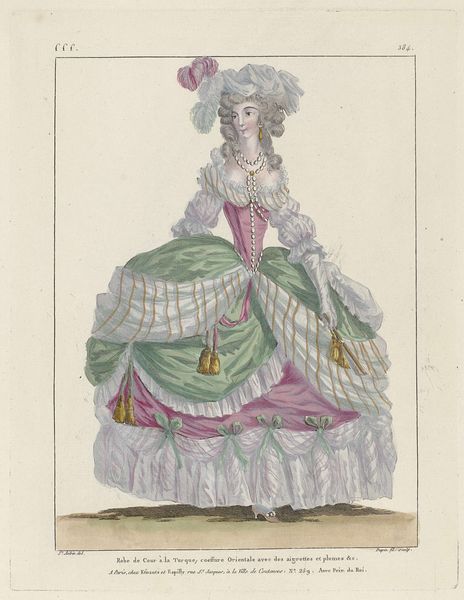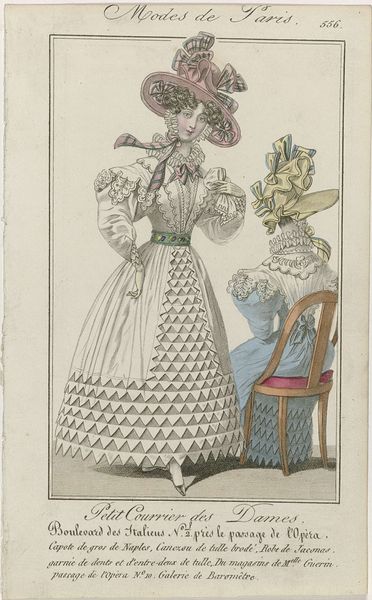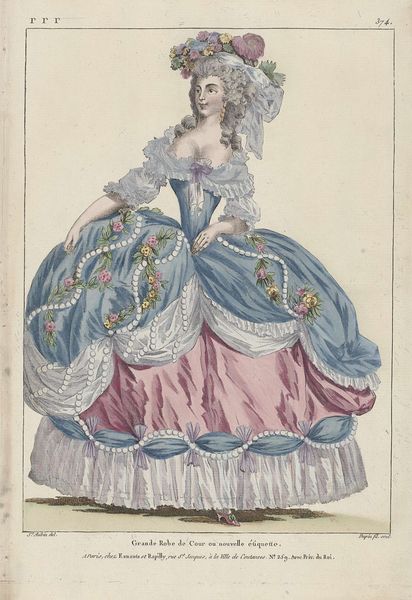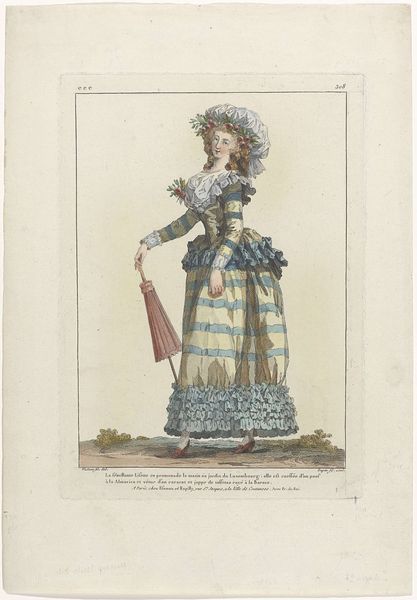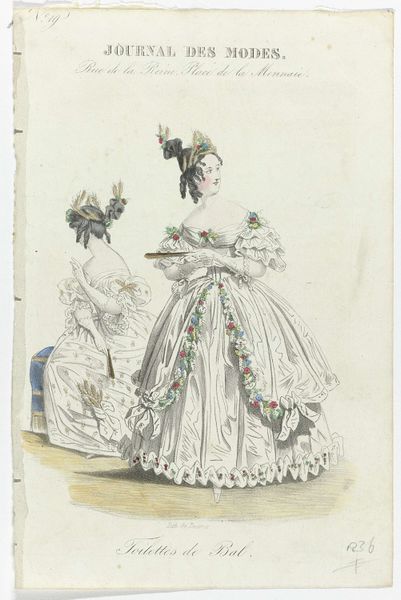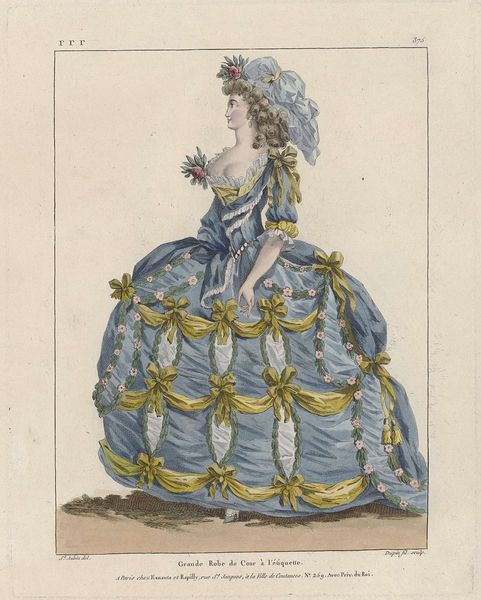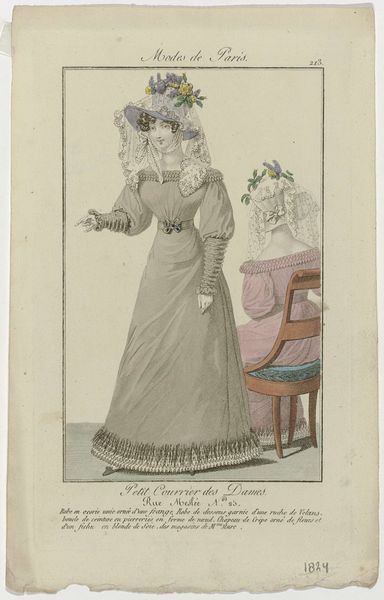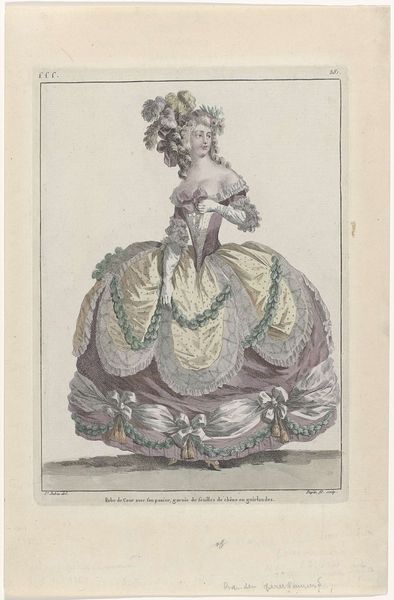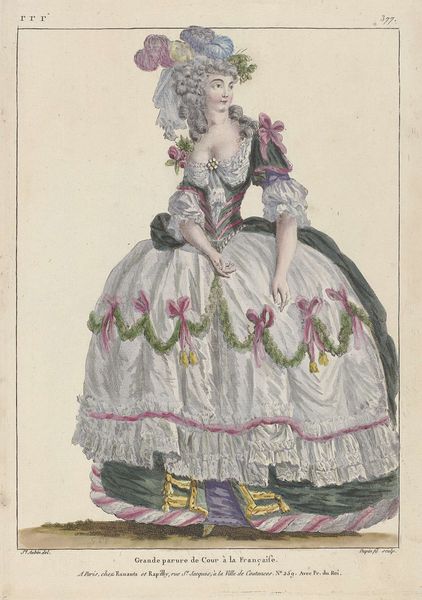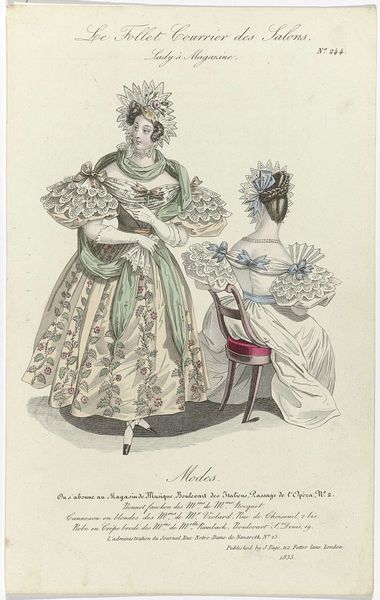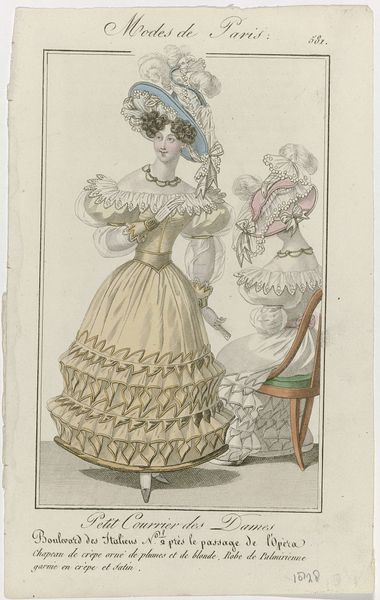
Gallerie des Modes et Costumes Français, 1787, ooo 360 : Grande Robe de Cour (...) 1787
0:00
0:00
Dimensions: height 294 mm, width 227 mm
Copyright: Rijks Museum: Open Domain
Curator: What strikes you first about this fashion plate from 1787, titled "Grande Robe de Cour garnie de gazes ondoyées de guirlandes de chine &c"? It’s a print, with etching, ink and watercolor, showcasing a court dress. Editor: The sheer volume, honestly! The fabric seems to balloon outwards, dominating the composition. It looks…uncomfortable, even as a drawing. You can almost feel the weight of the textiles. Curator: And think about the symbolic weight. The Rococo period prized extravagance and aristocratic display. This elaborate gown speaks to the wearer's social standing. Note how the pastel blue colour palette exudes tranquility, masking the underlying societal tensions of the era. The tiny head juxtaposed against the colossal dress creates a strange psychological effect. Editor: Exactly. All those undulating frills, tassels, the delicate gauze – each element represents a meticulous craft. Who were the people who spun, wove, embroidered these materials? Consider the social reality – the labor required for just one such gown. It's obscene. Curator: Indeed. The image freezes a transient moment, idealizing a woman in power while simultaneously highlighting constraints inherent to her role. Note how the artist frames her within refined artistic tradition. It's as if he were suggesting permanence in something fundamentally ephemeral such as fashion. The gaze, too – averted, demure... Editor: The layers of gauze create that undulating effect. It also illustrates how even so-called "high art" depends entirely on the skilled trades and consumption that often gets ignored. The small detail, the printing itself is evidence, no? It speaks volumes about design, its dissemination, its social impact beyond elite circles. Curator: These fashion plates played a crucial role in disseminating style. People could study it, and in some way aspire towards that standard even if access was limited, as indeed it would be. These aren't mere depictions; they construct a very precise idea of feminine identity. Editor: Yes, these things aren't just pretty pictures. The work is evidence of social inequality and intense artistic labor. The artist and the artisan are always intimately linked, and often mutually informing. Curator: The gown and all it stood for came to a swift, perhaps even brutal end in only a few short years with revolution. That fate renders the dress shown here evermore evocative. Editor: It's fascinating to reconsider this era when objects were saturated with meaning. Examining materiality, process, we start to understand its complicated beauty and dark reality a bit better.
Comments
No comments
Be the first to comment and join the conversation on the ultimate creative platform.
